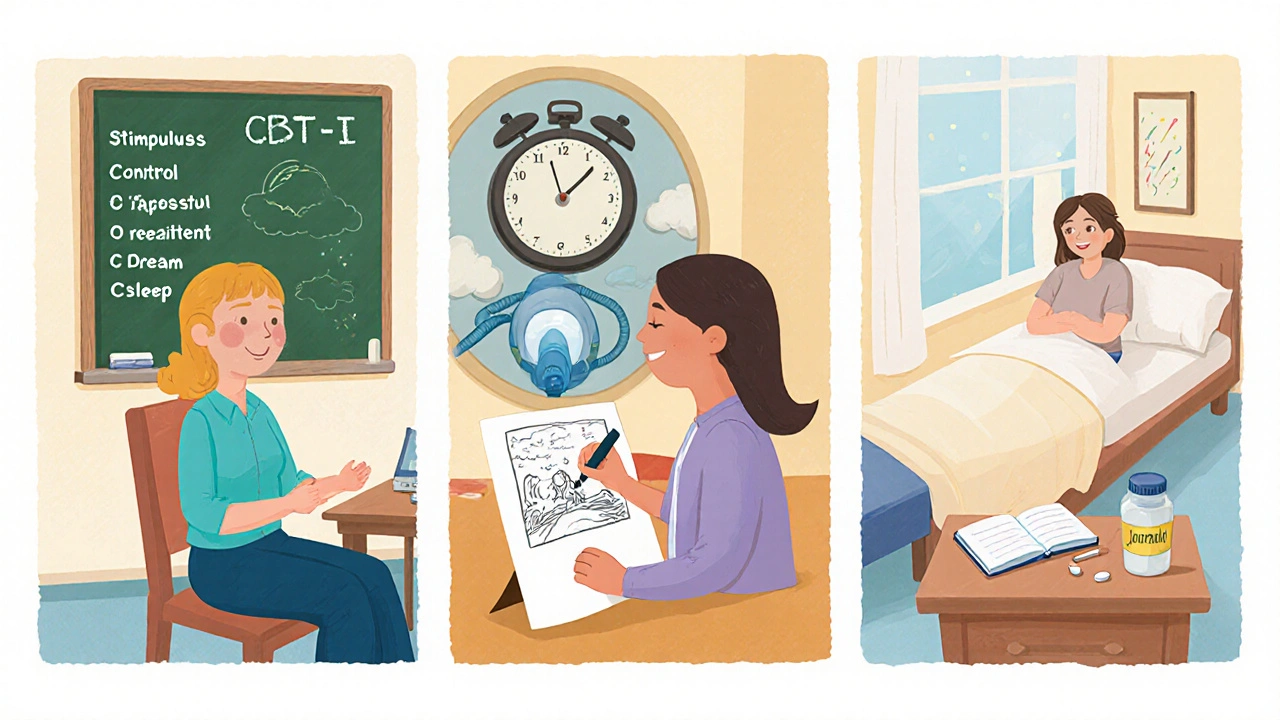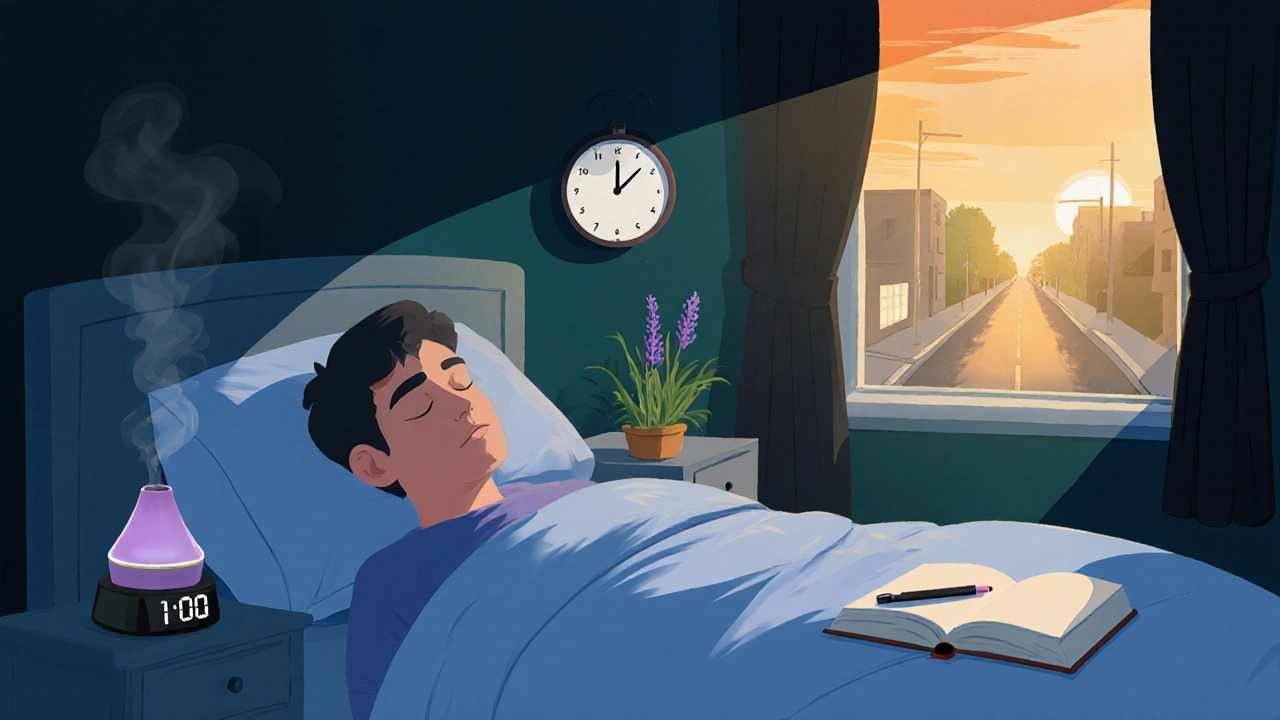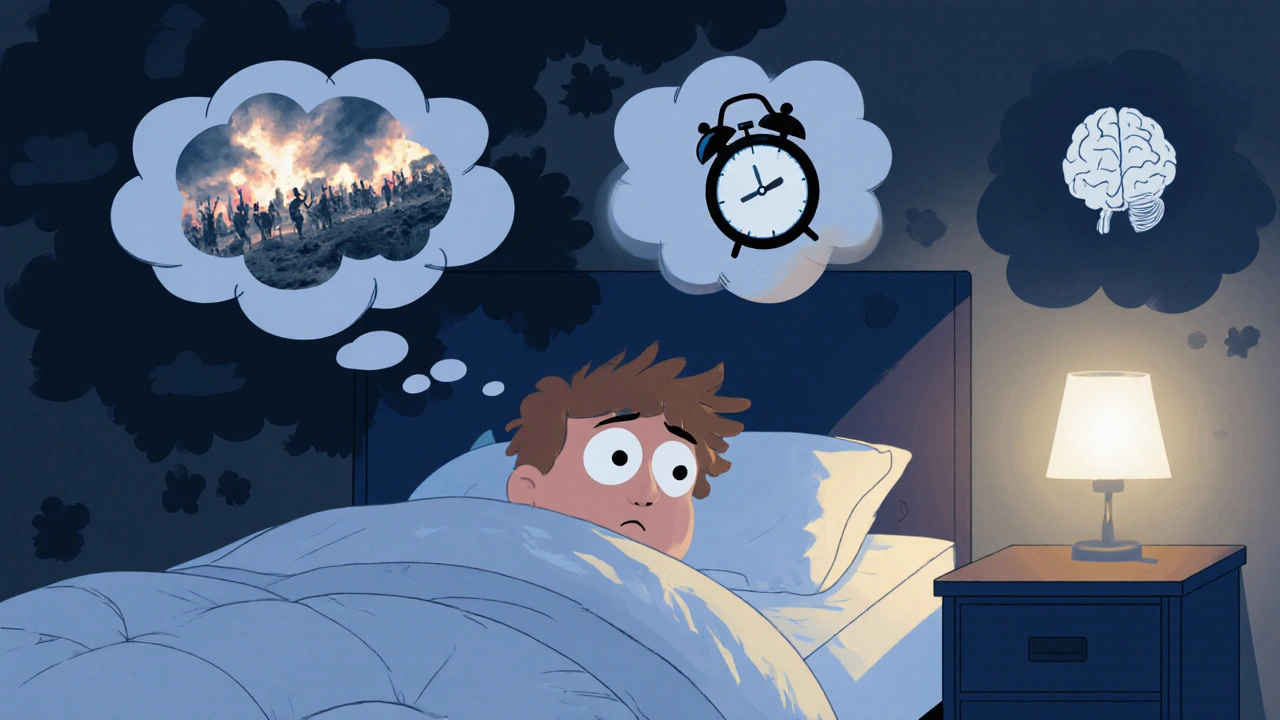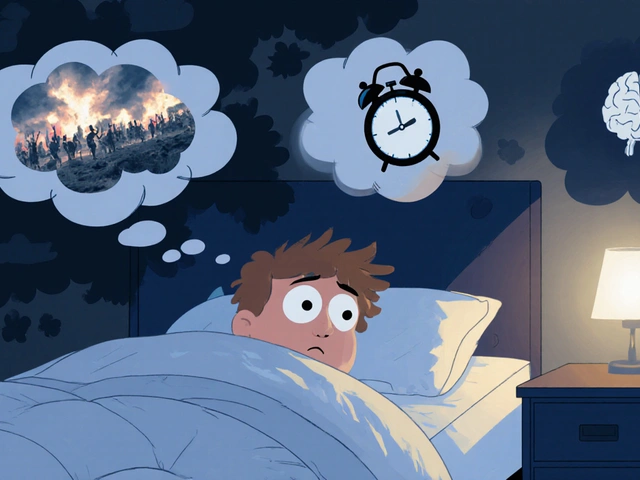PTSD Sleep Assessment Tool
Sleep Symptom Assessment
This tool evaluates your sleep symptoms in relation to PTSD. Based on clinical data from the article, we'll help you understand your risk and next steps.
Enter your information above to see personalized results
When trauma haunts the mind, the body often follows. People living with PTSD experience a cascade of physiological changes that mess with sleep, while chronic sleep problems can amplify the intensity of traumatic memories. Understanding this two‑way street helps you spot warning signs early and choose the right interventions.
What Counts as a Sleep Disorder?
Sleep Disorders are conditions that disrupt normal sleep patterns, duration, or quality. They range from difficulty falling asleep (insomnia) to abnormal breathing (sleep apnea) and vivid, distressing dreams (nightmare disorder). The DSM‑5 classifies over 80 distinct disorders, each linked to specific physiological or psychological triggers.
Defining PTSD
Post‑Traumatic Stress Disorder (PTSD) is a mental‑health condition that can develop after exposure to actual or threatened death, serious injury, or sexual violence. Core symptoms include intrusive memories, avoidance, negative mood alterations, and heightened arousal. While the mind replaying trauma is well known, less obvious is the way PTSD hijacks the sleep‑wake cycle.
Why PTSD Messes with Your Sleep
- Hyperarousal: The nervous system stays on high alert, flooding the brain with cortisol and norepinephrine. Elevated cortisol at night suppresses slow‑wave sleep, the deep restorative phase.
- Brain circuitry: The amygdala-responsible for fear processing-remains overactive, while the hippocampus, which stores contextual memory, shrinks over time. This imbalance favors fragmented REM sleep and vivid nightmares.
- Conditioned fear: Bedtime can become a cue for danger. The simple act of lying down triggers the same fight‑or‑flight response that originally kept the person alive during the traumatic event.
These mechanisms explain why up to 90% of people with PTSD report some form of sleep disturbance.
Sleep Disorders Most Common in PTSD
Research from 2023‑2024 shows a clear pattern. Below is a snapshot comparing prevalence in the general population versus individuals diagnosed with PTSD.
| Disorder | General Population | PTSD Population |
|---|---|---|
| Insomnia | 10‑15% | 70‑80% |
| Nightmare Disorder | 2‑5% | 50‑60% |
| REM Sleep Behavior Disorder | 0.5% | 8‑12% |
| Obstructive Sleep Apnea | 3‑7% | 20‑30% |
| Periodic Limb Movement Disorder | 5‑10% | 15‑20% |
Insomnia and nightmares dominate the picture, but secondary conditions like sleep apnea can worsen daytime fatigue and reduce treatment response.

How Professionals Diagnose the Overlap
- Screening questionnaires (e.g., Insomnia Severity Index, PTSD Checklist‑5) are usually the first step.
- If red flags appear, a sleep specialist may order overnight polysomnography to track brain waves, breathing, and muscle activity.
- Simultaneous psychiatric evaluation ensures that trauma‑related symptoms are not misattributed to a primary sleep disorder.
Integrated assessment reduces the risk of treating only one side of the problem.
Combined Treatment Strategies
Because the relationship is bidirectional, the most successful plans address both trauma and sleep.
- Cognitive‑Behavioral Therapy for Insomnia (CBT‑I): Structured sessions teach stimulus control, sleep restriction, and relaxation techniques. Studies show a 60% remission rate for insomnia in PTSD patients.
- Imagery Rehearsal Therapy (IRT): A nightmare‑focused CBT variant where patients rewrite distressing dreams and rehearse the new script during the day. IRT can cut nightmare frequency by half.
- Trauma‑focused psychotherapy (e.g., EMDR, Prolonged Exposure): Reducing intrusive memories lowers nocturnal hyperarousal, indirectly improving sleep.
- Medication: Selective Serotonin Reuptake Inhibitors (SSRIs) like sertraline help with overall PTSD symptoms. For severe nightmares, low‑dose prazosin (an alpha‑blocker) has strong evidence; recent meta‑analyses report a 45% reduction in nightmare intensity.
- Sleep‑apnea management: CPAP devices restore normal breathing, which can boost daytime mood and increase therapy adherence.
Choosing the right mix depends on symptom severity, comorbidities, and personal preference.
Everyday Habits That Support Healing Sleep
- Maintain a consistent bedtime and wake‑time, even on weekends.
- Limit caffeine after noon and avoid alcohol close to bedtime; both disrupt REM cycles.
- Create a calming pre‑sleep routine: light stretching, deep‑breathing, or a brief guided meditation.
- Keep the bedroom cool, dark, and free of screens. Blue‑light filters can reduce melatonin suppression.
- Write down intrusive thoughts in a journal before bed to externalize worries.
Small changes often unlock the brain’s natural ability to transition into deeper sleep stages.

When Professional Help Is Critical
If any of the following apply, seek a specialist promptly:
- Sleep loss exceeds 30 days and interferes with work, school, or relationships.
- Nightmares cause awakening at least three times per week.
- Snoring or pauses in breathing are observed by a partner.
- Self‑help attempts have not improved symptoms after four weeks.
- Suicidal thoughts or severe anxiety surface during the night.
Early intervention can prevent chronic health issues like hypertension, depression, and cognitive decline.
Key Takeaways
- PTSD and sleep disorders are tightly linked. Each can worsen the other, creating a feedback loop.
- Insomnia, nightmares, and sleep‑apnea are the most common sleep problems among people with PTSD.
- Integrated treatment-combining CBT‑I, trauma‑focused therapy, and, when needed, medication-offers the best chance for lasting relief.
- Simple sleep hygiene tweaks can amplify the benefits of formal therapy.
- Seek professional evaluation if sleep issues persist beyond a month or if you notice breathing pauses during sleep.
Frequently Asked Questions
Can PTSD cause sleep apnea?
PTSD doesn’t directly create airway blockage, but the heightened stress response can increase muscle tension in the throat, making existing apnea worse. Treating the underlying trauma often improves apnea severity, though CPAP may still be required.
Is medication necessary for PTSD‑related nightmares?
Medication isn’t mandatory, but for many people prazosin or low‑dose clonidine provides quick relief while they work on long‑term therapies like IRT. Always discuss dosage and side effects with a prescriber.
How long does CBT‑I take to improve sleep?
Typical CBT‑I programs run 6‑8 weekly sessions. Most participants notice measurable sleep improvement after the third session, with full benefits emerging around week six.
Are there any non‑pharmacological ways to reduce PTSD nightmares?
Yes. Imagery Rehearsal Therapy, mindfulness meditation before bed, and consistent sleep‑restriction schedules have all shown significant reductions in nightmare frequency without medication.
What role does cortisol play in PTSD‑related insomnia?
Cortisol stays elevated at night, suppressing the production of melatonin and disrupting the deep‑sleep (N3) stage. Over time, this hormonal imbalance makes it harder to fall asleep and stay asleep.







